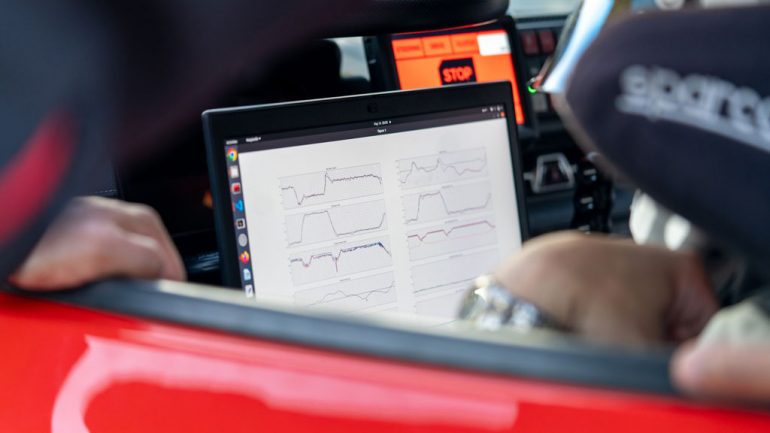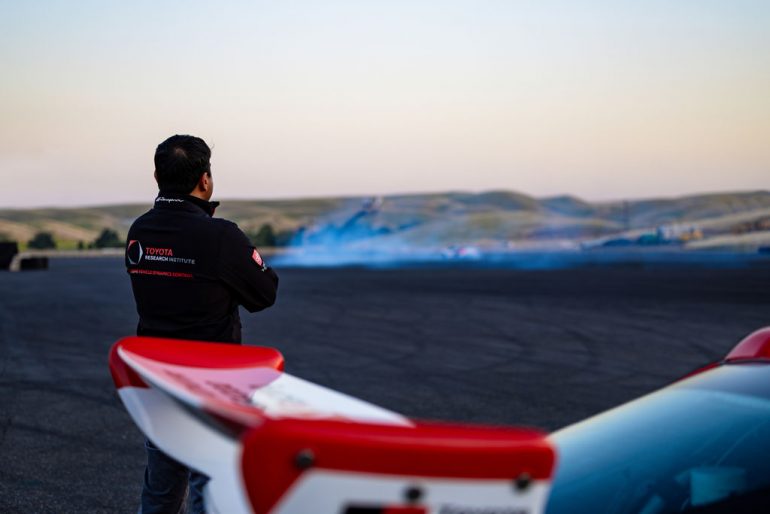
In a groundbreaking advancement in automotive technology, Toyota Research Institute (TRI) and Stanford Engineering have unveiled the world’s first fully autonomous tandem drift sequence. This achievement marks a significant milestone in the ongoing efforts to enhance vehicle safety and dynamic control through advanced AI and robotics.
For nearly seven years, TRI and Stanford have collaborated on research aimed at making driving safer by automating complex driving maneuvers. Their latest experiment involves autonomously drifting two cars in tandem, a feat previously only achievable by highly skilled human drivers. Drifting involves precisely controlling a vehicle’s direction after breaking traction by spinning the rear tires, a skill critical for recovering from skids on slippery surfaces like snow or ice. By adding a second car to the equation, the teams have created a more realistic simulation of dynamic driving conditions, where vehicles must respond rapidly to each other, pedestrians, and cyclists.
Also, don’t forget that you can get discounted new car pricing with a free quote through qualified local dealer partners.
“Our researchers came together with one goal in mind – how to make driving safer,” said Avinash Balachandran, vice president of TRI’s Human Interactive Driving division. “Now, utilizing the latest tools in AI, we can drift two cars in tandem autonomously. It is the most complex maneuver in motorsports, and reaching this milestone with autonomy means we can control cars dynamically at the extremes. This has far-reaching implications for building advanced safety systems into future automobiles.”

The autonomous tandem drift project has profound implications for vehicle safety, particularly in extreme conditions. “The physics of drifting are actually similar to what a car might experience on snow or ice,” explained Chris Gerdes, professor of mechanical engineering and co-director of the Center for Automotive Research at Stanford (CARS). “What we have learned from this autonomous drifting project has already led to new techniques for controlling automated vehicles safely on ice.”
In an autonomous tandem drifting sequence, two vehicles—a lead car and a chase car—navigate a course at times within inches of each other while operating at the edge of control. This is made possible through advanced AI and a neural network tire model that allows the vehicles to learn from experience, much like an expert driver. The track conditions can change dramatically over a few minutes, and the AI developed for this project learns from every trip to handle these variations.

Car crashes result in more than 40,000 fatalities in the US and about 1.35 million fatalities worldwide every year. Many of these incidents are due to a loss of vehicle control in sudden, dynamic situations. Autonomy holds tremendous promise for assisting drivers to react correctly. “When your car begins to skid or slide, you rely solely on your driving skills to avoid colliding with another vehicle, tree, or obstacle. An average driver struggles to manage these extreme circumstances, and a split second can mean the difference between life and death,” added Balachandran. “This new technology can kick in precisely in time to safeguard a driver and manage a loss of control, just as an expert drifter would.”

The experiments were conducted at Thunderhill Raceway Park in Willows, California, using two modified GR Supras. Algorithms on the lead car were developed at TRI, while Stanford engineers developed those on the chase car. Both cars were modified by GReddy and Toyota Racing Development (TRD) to meet the specifications used in Formula Drift competitions, allowing the teams to collect data with expert drivers in a controlled environment. Each vehicle is equipped with computers and sensors that control their steering, throttle, and brakes while also sensing their motion, such as position, velocity, and rotation rate.

Crucially, the vehicles share a dedicated WiFi network that allows them to communicate in real time by exchanging information about their relative positions and planned trajectories. To achieve autonomous tandem drifting, the vehicles continually plan their steering, throttle, and brake commands, and the trajectory they intend to follow using a technique called Nonlinear Model Predictive Control (NMPC). In NMPC, each vehicle starts with objectives, represented mathematically as rules or constraints that it must obey. The lead vehicle’s objective is to sustain a drift along a desired path while remaining subject to the constraints of the laws of physics and hardware limits like maximum steering angle. The chase vehicle’s objective is to drift alongside the lead vehicle while proactively avoiding a collision.

Each vehicle then solves and re-solves an optimization problem up to 50 times per second to decide what steering, throttle, and brake commands best meet its objectives while responding to rapidly changing conditions. By leveraging AI to constantly train the neural network using data from previous tests, the vehicles improve with every trip to the track.

“Doing what has never been done before truly shows what is possible,” concluded Gerdes. “If we can do this, just imagine what we can do to make cars safer.”
The collaboration between TRI and Stanford Engineering has not only pushed the boundaries of what is possible in autonomous driving but also paved the way for future advancements in vehicle safety technology. As these innovations continue to develop, the potential to significantly reduce traffic fatalities and improve driving safety becomes increasingly achievable.